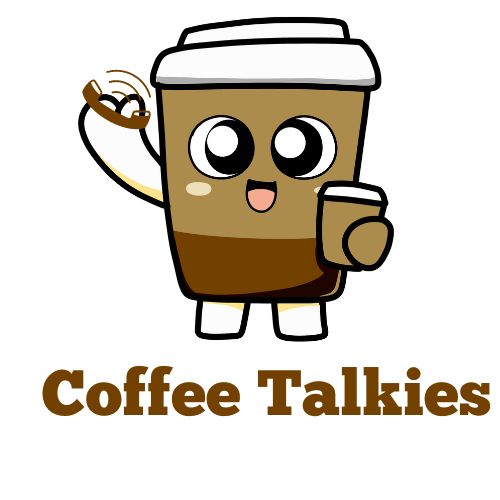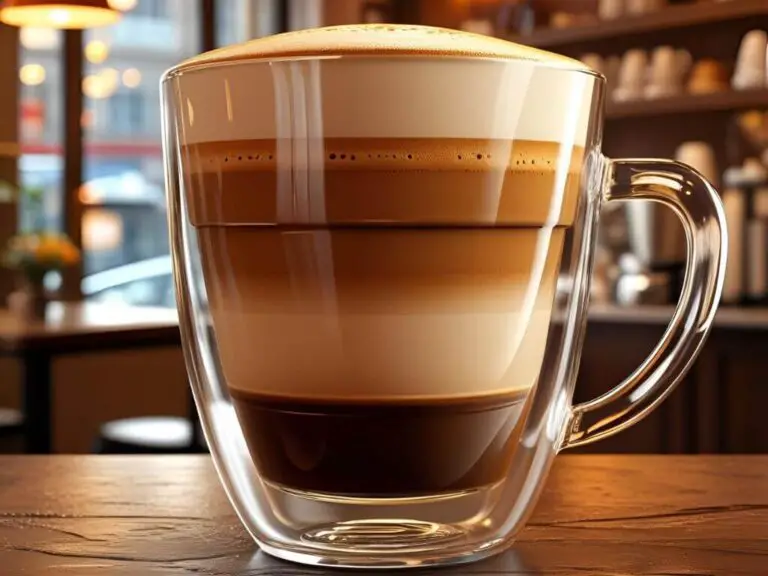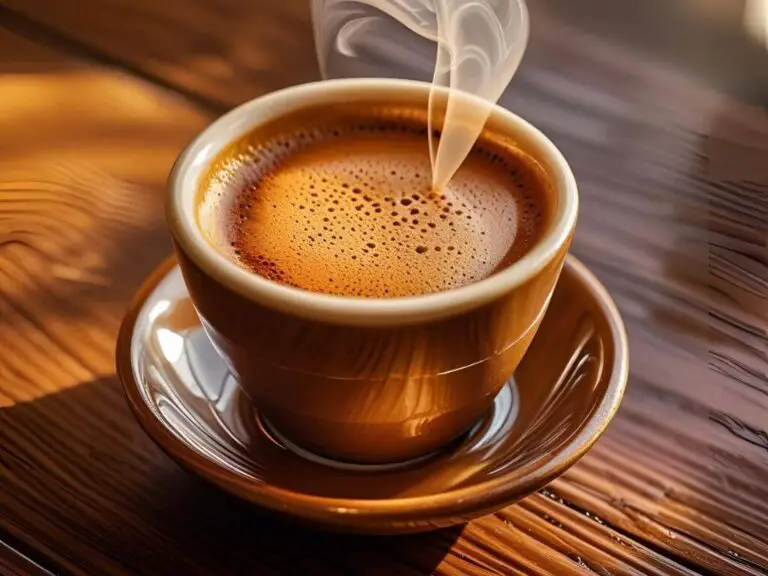How Much Caffeine in Espresso vs. Other Coffee Drinks
Espresso: the potent elixir that kickstarts mornings and fuels productivity. But have you ever wondered just how much caffeine is packed into that tiny cup? The answer might surprise you.
While many turn to espresso for its robust flavor and quick energy boost, understanding its caffeine content is crucial for those monitoring their intake. From health considerations to performance enhancement, knowing the caffeine levels in your espresso can make a significant difference in your daily routine. 🧠☕
As we delve into the world of espresso and caffeine, we’ll explore the average content, factors influencing caffeine levels, and methods for accurate measurement. We’ll also discuss important health considerations to help you make informed decisions about your espresso consumption.
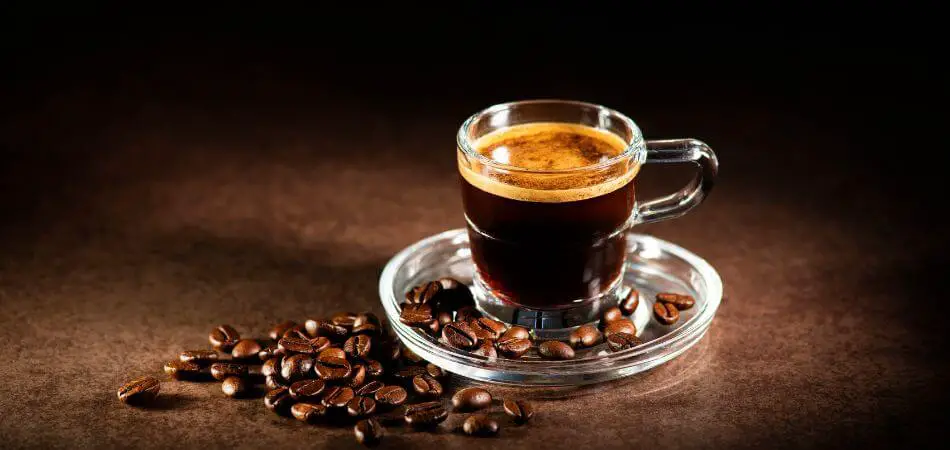
Understanding Espresso and Caffeine
What is espresso?
Espresso is a concentrated form of coffee brewed by forcing hot water under high pressure through finely-ground coffee beans. This method creates a small, intense shot of coffee with a rich flavor profile and a distinctive layer of crema on top. Espresso serves as the foundation for many popular coffee drinks, including cappuccinos, lattes, and Americanos.
Key characteristics of espresso include:
- Brewing method: Pressure-driven extraction
- Serving size: Typically 1-2 ounces (30-60 ml)
- Preparation time: 20-30 seconds
- Flavor profile: Strong, bold, and complex
How caffeine affects the body
Caffeine, the primary stimulant in espresso, has various effects on the human body. Understanding these effects is crucial for managing caffeine consumption and optimizing its benefits.
| Effect | Description |
|---|---|
| Increased alertness | Caffeine blocks adenosine receptors, reducing drowsiness |
| Enhanced cognitive function | Improves focus, concentration, and reaction time |
| Elevated mood | Stimulates dopamine release, potentially improving mood |
| Boosted metabolism | Temporarily increases metabolic rate and fat oxidation |
| Improved physical performance | Enhances endurance and reduces perceived exertion during exercise |
While these effects can be beneficial, it’s important to note that individual responses to caffeine may vary. Some people may experience side effects such as jitters, anxiety, or sleep disturbances, especially with high caffeine intake.
Factors influencing caffeine content in espresso
The caffeine content in espresso can vary significantly due to several factors:
- Coffee bean variety:
- Arabica beans generally contain less caffeine than Robusta beans
- Some specialty coffee varieties may have unique caffeine profiles
- Roast level:
- Contrary to popular belief, lighter roasts often contain more caffeine by weight than darker roasts
- Roasting process can affect the density and chemical composition of beans
- Grind size:
- Finer grinds typically result in higher caffeine extraction
- Espresso requires a very fine grind for optimal extraction
- Brewing parameters:
- Water temperature
- Pressure
- Extraction time
- Water-to-coffee ratio
- Serving size:
- Single shot vs. double shot
- Variations in shot volume across different cafes or regions
Understanding these factors is essential for both coffee enthusiasts and professionals seeking to control or optimize the caffeine content in their espresso drinks.
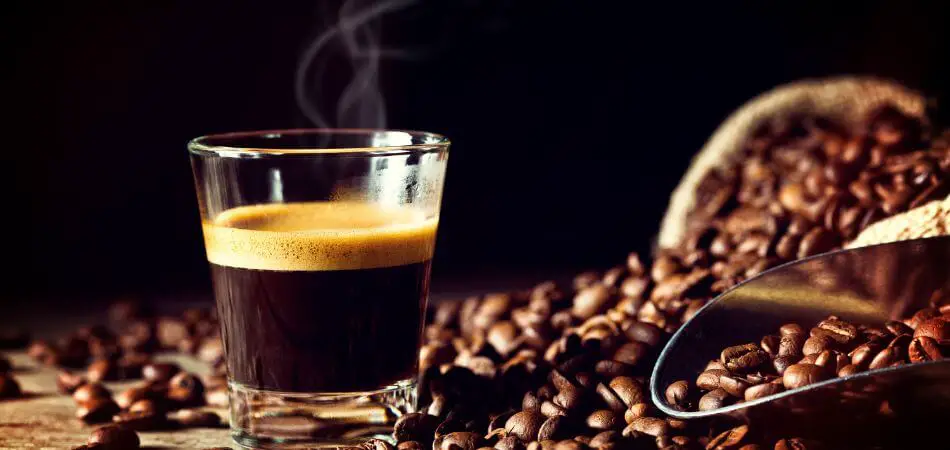
Average Caffeine Content in Espresso
Understanding the average caffeine content in espresso is crucial for coffee enthusiasts and health-conscious individuals alike. Let’s delve into the details of espresso’s caffeine levels, starting with the standard serving size.
Standard Serving Size of Espresso
The standard serving size of espresso, also known as a “shot,” is typically:
- Volume: 1 fluid ounce (30 ml)
- Weight: 7-9 grams of ground coffee
This small but potent serving is the foundation for many popular coffee drinks, including Americanos, lattes, and cappuccinos.
Typical Caffeine Range per Shot
The caffeine content in a single shot of espresso can vary, but generally falls within the following range:
- 30-50 mg per shot (1 oz)
It’s important to note that this range is an average, and actual caffeine content can fluctuate based on various factors, such as:
- Bean type and roast level
- Grind size
- Extraction time
- Water temperature
Comparison to Other Coffee Drinks
To put espresso’s caffeine content into perspective, let’s compare it with other popular coffee beverages:
| Beverage Type | Serving Size | Caffeine Content |
|---|---|---|
| Espresso | 1 oz (30 ml) | 30-50 mg |
| Drip Coffee | 8 oz (240 ml) | 65-120 mg |
| Latte | 12 oz (355 ml) | 63-126 mg |
| Cappuccino | 12 oz (355 ml) | 63-126 mg |
| Americano | 12 oz (355 ml) | 60-100 mg |
As the table illustrates, while espresso has a high concentration of caffeine per ounce, its small serving size means that a single shot often contains less total caffeine than a standard cup of drip coffee.
However, it’s crucial to remember that many espresso-based drinks, such as lattes and cappuccinos, often use double shots, effectively doubling the caffeine content. Additionally, some coffee shops may use triple shots in their larger drink sizes, further increasing the caffeine levels.
The concentrated nature of espresso also means that it delivers a quick caffeine boost, which can be felt more rapidly than the same amount of caffeine consumed through drip coffee. This rapid absorption can make espresso particularly appealing for those seeking an immediate energy boost.
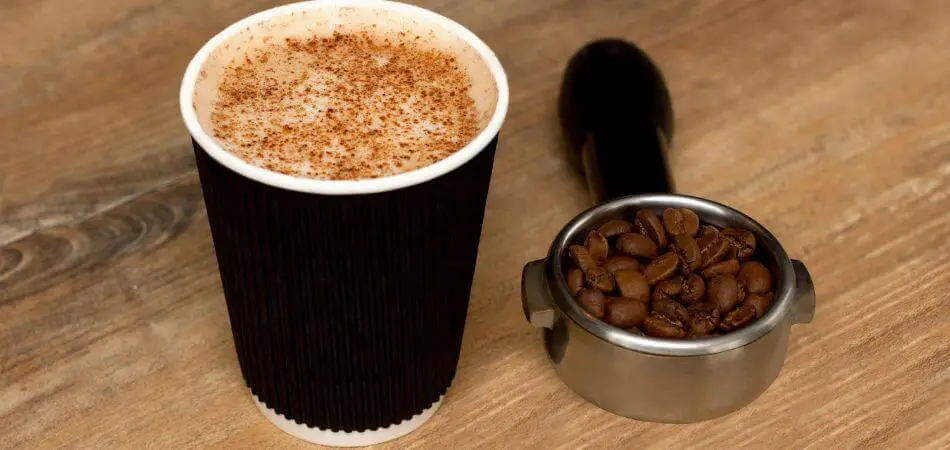
Variables Affecting Caffeine Levels
The amount of caffeine in espresso can vary significantly due to several factors. Understanding these variables is crucial for both coffee enthusiasts and baristas seeking to control the caffeine content in their espresso shots.
A. Coffee Bean Variety
The type of coffee bean used plays a significant role in determining the caffeine content of espresso. Generally, there are two main species of coffee beans:
- Arabica
- Robusta
| Bean Type | Caffeine Content | Flavor Profile |
|---|---|---|
| Arabica | Lower (1.2-1.5%) | Smooth, complex |
| Robusta | Higher (2.2-2.7%) | Strong, bitter |
Robusta beans contain nearly twice the amount of caffeine compared to Arabica beans. This difference can significantly impact the final caffeine content of the espresso shot.
B. Roast Level
Contrary to popular belief, the roast level of coffee beans affects caffeine content:
- Light roasts: Contain slightly more caffeine
- Dark roasts: Contain slightly less caffeine
This occurs because the roasting process breaks down caffeine molecules. However, the difference is minimal and often negligible in a single shot of espresso.
C. Grind Size
The size of coffee grounds influences the extraction process and, consequently, the caffeine content:
- Fine grind: Increases surface area, leading to more caffeine extraction
- Coarse grind: Decreases surface area, resulting in less caffeine extraction
For espresso, a fine grind is typically used, which contributes to its higher caffeine concentration compared to other brewing methods.
D. Extraction Time
The duration of the extraction process directly affects the amount of caffeine in the final espresso shot:
- Shorter extraction time: Less caffeine extracted
- Longer extraction time: More caffeine extracted
However, it’s important to note that over-extraction can lead to bitter-tasting espresso. The ideal extraction time for a standard espresso shot is typically between 25-30 seconds.
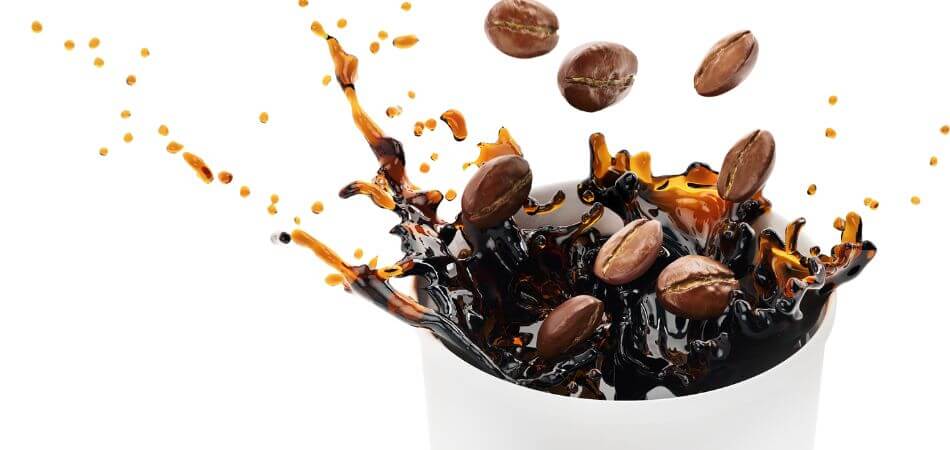
Measuring Caffeine in Espresso
Now that we’ve explored the factors influencing caffeine levels in espresso, let’s delve into the methods used to measure its caffeine content accurately.
Laboratory Testing Methods
Professional laboratories employ sophisticated techniques to determine the precise caffeine content in espresso. These methods include:
- High-Performance Liquid Chromatography (HPLC)
- Gas Chromatography-Mass Spectrometry (GC-MS)
- UV Spectrophotometry
Each method has its advantages and limitations:
| Method | Accuracy | Cost | Time Required |
|---|---|---|---|
| HPLC | Very High | High | Medium |
| GC-MS | Highest | High | Long |
| UV Spec | Moderate | Low | Short |
HPLC is the most commonly used method due to its balance of accuracy and efficiency. It separates compounds based on their interactions with a stationary phase, allowing for precise caffeine quantification.
At-Home Caffeine Test Kits
For coffee enthusiasts and home baristas, at-home caffeine test kits offer a more accessible option. These kits typically use colorimetric methods to estimate caffeine content. While not as accurate as laboratory tests, they can provide a reasonable approximation. Popular at-home test kits include:
- D+Caf Caffeine Test Strips
- Caffeine Test Kit by Neogen
- Alkaloid Test Kit by Erowid
To use these kits:
- Prepare a small sample of espresso
- Follow the kit’s instructions for sample preparation
- Apply the test strip or reagent
- Compare the resulting color to a provided chart
It’s important to note that these tests may have limitations in accuracy and can be affected by other compounds present in coffee.
Estimating Caffeine Content
When laboratory tests or at-home kits are not available, estimating caffeine content can be done using average values and known variables. Factors to consider include:
- Bean type (Arabica vs. Robusta)
- Roast level
- Brewing method
- Serving size
A general formula for estimating caffeine content in espresso:
Estimated Caffeine (mg) = Base Caffeine Content x Serving Size x Roast Factor x Bean Type FactorWhere:
- Base Caffeine Content: ~63 mg per fluid ounce
- Serving Size: Typically 1-2 fluid ounces for espresso
- Roast Factor: Light (1.1), Medium (1.0), Dark (0.9)
- Bean Type Factor: Arabica (1.0), Robusta (1.6)
This method provides a rough estimate but can be useful for general comparisons or when precise measurements are not required.
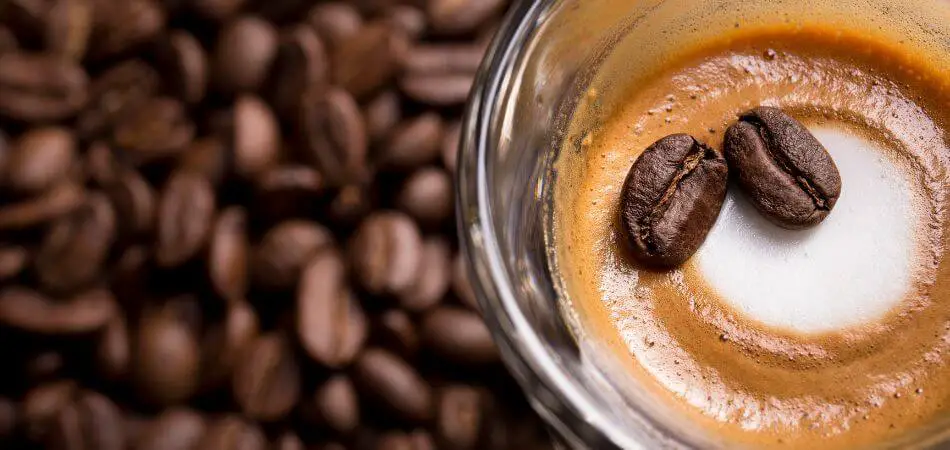
Health Considerations
As we delve into the health aspects of espresso consumption, it’s crucial to understand both the benefits and potential risks associated with caffeine intake. This knowledge will help you make informed decisions about your espresso consumption habits.
Recommended Daily Caffeine Intake
Health authorities generally recommend limiting caffeine intake to ensure its safe consumption. The following table outlines the recommended daily caffeine limits for different groups:
| Group | Recommended Daily Limit |
|---|---|
| Healthy Adults | 400 mg |
| Pregnant Women | 200 mg |
| Adolescents (12-18 years) | 100 mg |
| Children (under 12) | Not recommended |
It’s important to note that these limits include caffeine from all sources, not just espresso. A typical shot of espresso contains about 63 mg of caffeine, so moderate consumption can fit within these guidelines.
Benefits of Moderate Espresso Consumption
When consumed in moderation, espresso can offer several health benefits:
- Improved alertness and concentration
- Enhanced physical performance
- Potential reduction in the risk of certain diseases, such as type 2 diabetes and Parkinson’s disease
- Rich source of antioxidants
Moderate espresso consumption may contribute to overall well-being when part of a balanced lifestyle.
Potential Risks of Excessive Caffeine Intake
While espresso can be beneficial, excessive caffeine intake may lead to adverse effects:
- Insomnia or sleep disturbances
- Increased anxiety and restlessness
- Digestive issues
- Elevated blood pressure
- Rapid heart rate
It’s crucial to be aware of your body’s response to caffeine and adjust consumption accordingly.
Alternatives for Caffeine-Sensitive Individuals
For those sensitive to caffeine or looking to reduce their intake, several alternatives can provide similar satisfaction:
- Decaf espresso: Offers the taste and ritual without significant caffeine content
- Herbal teas: Provide various flavors and potential health benefits
- Chicory coffee: A caffeine-free option with a similar taste profile
- Golden milk: A warming, spiced drink with potential anti-inflammatory properties
These alternatives can be enjoyable substitutes while avoiding caffeine’s effects.
Conclusion
Espresso stands out as a potent source of caffeine, with its concentration varying based on numerous factors. From bean selection to brewing methods, each element plays a crucial role in determining the final caffeine content. Understanding these variables empowers coffee enthusiasts to make informed choices about their espresso consumption.
FAQ’s
Is 2 shots of espresso a lot of caffeine?
How much caffeine is in Starbucks espresso?
A standard shot of espresso at Starbucks contains approximately 75-100 milligrams of caffeine. However, the exact amount can vary slightly depending on the size of the shot and the type of coffee beans used.
Is espresso higher in caffeine than coffee?
Espresso has a higher caffeine concentration per ounce than regular coffee. However, a single shot of espresso is typically smaller than a cup of regular coffee. So, while espresso has a stronger caffeine punch per ounce, you might end up consuming more caffeine overall with a larger cup of regular coffee.
Is 20 shots of espresso a lot?
Yes, 20 shots of espresso is a lot. Consuming that much caffeine can lead to side effects like anxiety, restlessness, insomnia, and digestive issues. It’s important to listen to your body and avoid excessive caffeine intake.
